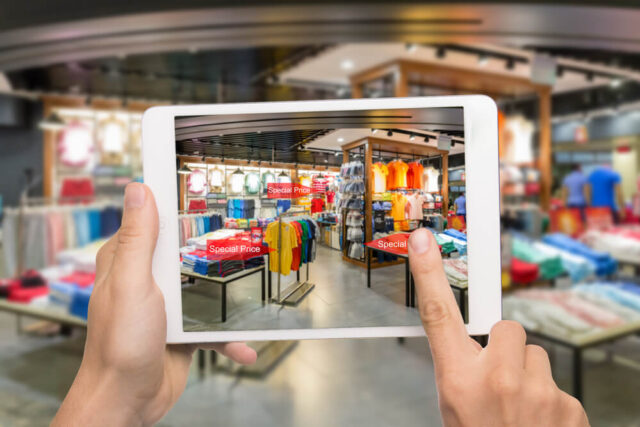Imagine taking the customer experience to a whole new environment. The metaverse has the potential for you to do business in a completely different way. The possibilities are almost endless and have only just begun.
What is the metaverse?
According to McKinsey & Company, the metaverse is an emerging 3-D-enabled digital space. It uses virtual and augmented reality and other advanced internet technology to give people lifelike experiences online. It represents the blending of digital and physical realities with various applications across healthcare, education, entertainment and commerce.
The metaverse builds upon existing technology to enable collaboration and connection across the physical and digital worlds. Technologies that will impact metaverse development include:
- artificial intelligence
- internet of things
- extended reality
- brain-computer interfaces
- 3D modelling and reconstruction
- spatial and edge computing
- blockchain
For example, virtual reality, holograms and artificial intelligence could combine to create lifelike avatars. These avatars complete tasks, earn rewards and even make online purchases.
Doing business in the metaverse
The metaverse provides businesses with the opportunity to reach new market segments and engage with existing customers. It offers the potential to collaborate with consumers on products and social content, leading to deeper relationships and increasing market share.
Major brands like Benetton and Nike are already operating in the metaverse. Using gaming-type experiences, visitors can collect QR codes or other tokens to make physical purchases. Roblox, an online multiplayer gaming platform, has collaborated with several brands including Nike, Ralph Lauren and Chipotle to create metaverse experiences.
There are currently two main ways for brands to operate in the metaverse.
Virtual-to-physical commerce
Virtual-to-physical commerce is when an item is bought in a virtual setting and exchanged for a physical product or experience.
To make V2P purchases possible, tokens that enable transactions and show proof of ownership are needed. These are called “non-fungible tokens” (NFTs). NFTs use blockchain technology to represent various virtual assets, such as artworks, or real estate. As with crypto currencies, blockchain technology establishes ownership and digital origin.
Brands use NFT to create deeper engagement with their customers through V2P commerce. For example, Gap created a limited edition range of NFT hoodies which customers could exchange for a physical garment.
Direct-to-avatar commerce
A direct-to-avatar (D2A) commerce involves selling virtual products directly to avatars. For example, shoppers could buy digital clothes and other accessories for their avatars. This gives customers the opportunity to collaborate with brands and share experiences and products on social media.
Several brands have successfully used this technology. Ralph Lauren released a digital clothing collection via the Zepeto app and American Eagle launched a digital clothing collection for Bitmoji avatars.
Metaverse challenges
As with any digital technology, the benefits provided by the metaverse will also come with risks. Data privacy and cybersecurity are major challenges and current privacy laws may not be enough. Some concerns include misuse of collected data, ownership rights, information shared between users and protection of minors. Businesses and consumers will need to understand and manage these risks to ensure a positive metaverse experience.
Future potential for your business
Just as commerce has evolved from physical to online experiences, the metaverse may be the next evolution for commerce. As customers move effortlessly between the physical and virtual worlds, seamless integrated payment experiences will be needed.
To succeed in the metaverse businesses will need the courage to reimagine their business models and take the time to listen to their customers. Early adopters are already providing experiences that add value to their customers and build loyalty for their brands. New businesses entering the metaverse should learn from these examples and work with a trusted payment partner to execute their own strategies.
To find out how our seamless integrated payments can help your business succeed in the future, get in touch today.
This article is based on the Global Payments 2023 Commerce and Payment Trends Report. Eway is a Global Payments company.


Subscribe to updates
Get the latest news and payment insights from Eway hot off the press.



